Fall Festival 2023 Standouts: The 18 Best Films from Venice, TIFF, Telluride, and NYFF
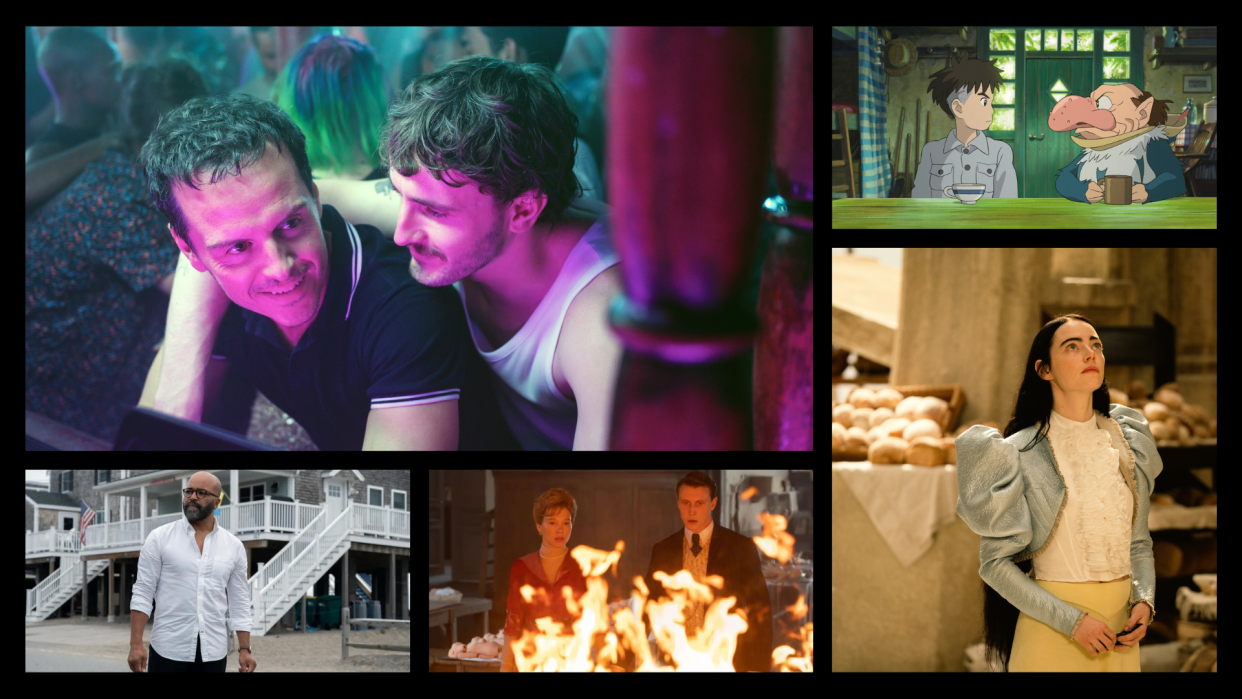
- Oops!Something went wrong.Please try again later.
- Oops!Something went wrong.Please try again later.
- Oops!Something went wrong.Please try again later.
UPDATED: With the fall festivals behind us — we’re talking the triple whammy of Venice, Telluride, and Toronto, plus the just-wrapped New York Film Festival and BFI London — we’re taking stock of the best films of the circuit. While it’s always easy to use the fall festivals as a window into this year’s awards contenders, of which many debuted over the past few weeks, the festivals have also provided us with some of the best films of 2023, full stop.
These standouts include new films from perennial favorites like Hayao Miyazaki, Errol Morris, Bertrand Bonello, Yorgos Lanthimos, Kitty Green, Andrew Haigh, Bill and Turner Ross, and Alexander Payne. Rising stars aren’t in short supply either, including first and second narrative features from TIFF winner Cord Jefferson, Annie Baker, and Kristoffer Borgli. Amongst this selection, words like “gem,” “masterpiece,” and “crowd-pleaser” are thrown around with regularity, but not without real consideration.
More from IndieWire
Ahead, we’ve picked out the 18 best films of the fall festival season we’ve enjoyed in recent days. Many of these films are arriving on a screen, big or small, near you soon. In short: clear your calendars.
Anne Thompson, Christian Blauvelt, Marcus Jones, Proma Khosla, Adam Solomons, Christian Zilko, and Esther Zuckerman also contributed to this article.
“All of Us Strangers”
Based on a 1987 Taichi Yamada novel that writer-director Andrew Haigh has tenderly queered in a way that resonates with his own experience, “All of Us Strangers” begins with a premise so poignant that even the slightest miscalibration could make the whole thing ring false. Good thing the movie doesn’t have any of those. Andrew Scott of “Fleabag” fame stars as a lonely gay screenwriter named Adam, who’s all too at home in the eerie new London high-rise where he seems to be one of the only two residents. And wouldn’t you know it, the other renter — Harry — looks an awful lot like Paul Mescal, who plays the part with a sex-forward puckishness that disguises the same pain that it advertises with every glance (no actor on Earth is as good at selling an open wound). As the two men begin to let each other into their apartments and lives, Adam begins writing a script about his childhood in suburbia, a process that sees him visiting the house where he (and Haigh!) grew up, and communing with the spirits of his parents (Jamie Bell and Claire Foy) who died before they really got to know him.
And so the stage is set for a plaintive ghost story whose lo-fi approach to the afterlife cleaves much closer to the wistfulness of Hirokazu Kore-eda’s “After Life” than it does the sentimentality of “Field of Dreams.” Which isn’t to suggest that “All of Us Strangers” isn’t a nuclear-grade tearjerker, because it is most definitely that, especially once Adam’s burgeoning relationship with Harry begins to compound the one he resurrects with his parents. But Haigh tells this potentially maudlin story with such a light touch that even its biggest reveals hit like a velvet hammer, and his screenplay so movingly echoes Adam’s yearning to be known — across time and space — that the film always feels rooted in his emotional present, even as it pings back and forth between dimensions. This is one of the very best films of the year. —DE
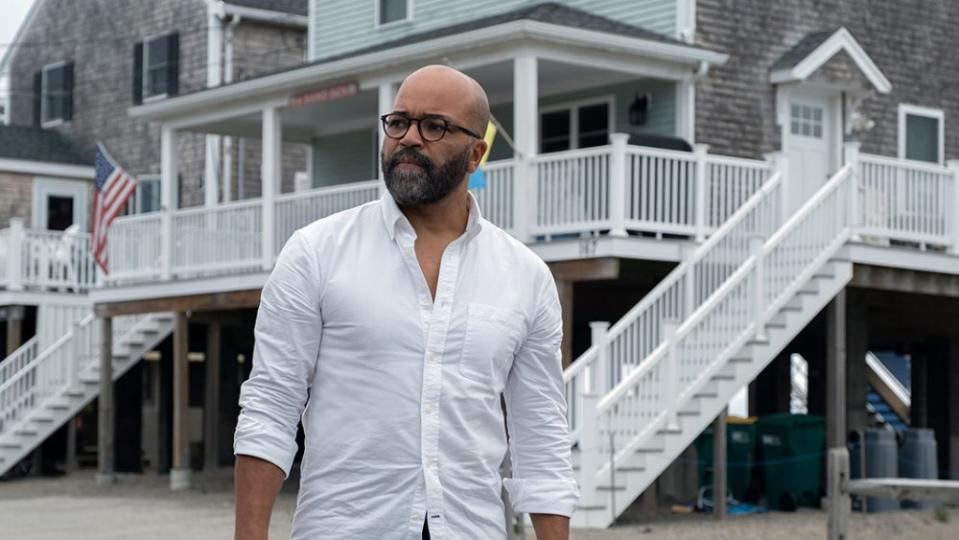
“American Fiction”
Though not quite a household name, Cord Jefferson is known for having one of the most stellar resumés of any TV writer not yet running their own show, especially one who was a journalist less than a decade ago, having contributed to “Succession,” “Master of None,” “The Good Place,” “Station Eleven,” and won an Emmy for “Watchmen.”
One can see aspects of all those experiences filter into his directorial debut “American Fiction,” an adaptation of Percival Everett’s 2001 novel “Erasure,” about a highbrow Black author who writes a parody of exploitive autofiction under a pseudonym that begins to reach critical and commercial heights unseen by his previous work — an experience he hides from his family as they deal with various challenges.
As protagonist Thelonious “Monk” Ellison, star Jeffrey Wright leads a cast that includes Sterling K. Brown, Tracee Ellis Ross, Erika Alexander, Issa Rae, actors primarily known for their TV work at this point in time, who are intimately aware of how to juice every punchline out of Jefferson’s savvy script. The Orion Pictures release is at once a crowd pleaser and a trenchant reminder to the crowd that Black American stories can encompass more than just historic adversity. —MJ
“The Beast”
Bertrand Bonello’s audacious and astonishing sci-fi romance shape-shifts across Belle Époque Paris in 1910 to a recognizable 2014 Los Angeles, and, finally, a sterile post-pandemic future somewhere in 2044. Léa Seydoux plays a woman named Gabrielle in all three periods — first, a miserably married fin-de-siècle pianist, then an aspiring actress in Los Angeles in the present day, and then a woman electing to have the leftover emotions from her past lives erased through a submersion tank of inky goo and an articulated robot arm to the brain.
But her constant — her “Beast” — is a pursuit adjacent to love, in the form of a man played by George MacKay. He first courts her in 1910, a section Bonello adapts faithfully from Henry James’ 1903 novella “The Beast in the Jungle,” about a man who rejects love because he thinks something horrible will happen to prevent it (it never does). Then, in 2014, MacKay plays a Santa Barbara college student named Louis Lewanski who, if you followed the news that year, you’ll recognize immediately from his Armani sunglasses, camera positioning, Range Rover, and self-tape monologues promising to slaughter all women who rejected him, as incel killer Elliot Rodger.
French director Bonello’s films are typically more invested in emotions and a concept than actually stirring them in the audience, but “The Beast” is a touching love story as Gabrielle keeps coming up against various versions of MacKay’s character throughout her lifetime(s). Think of it as “Eternal Sunshine of the Spotless Mind” for pessimists, and with an even more unpredictable structure that will alienate mainstream audiences but intrigue those seeking a challenge. —RL
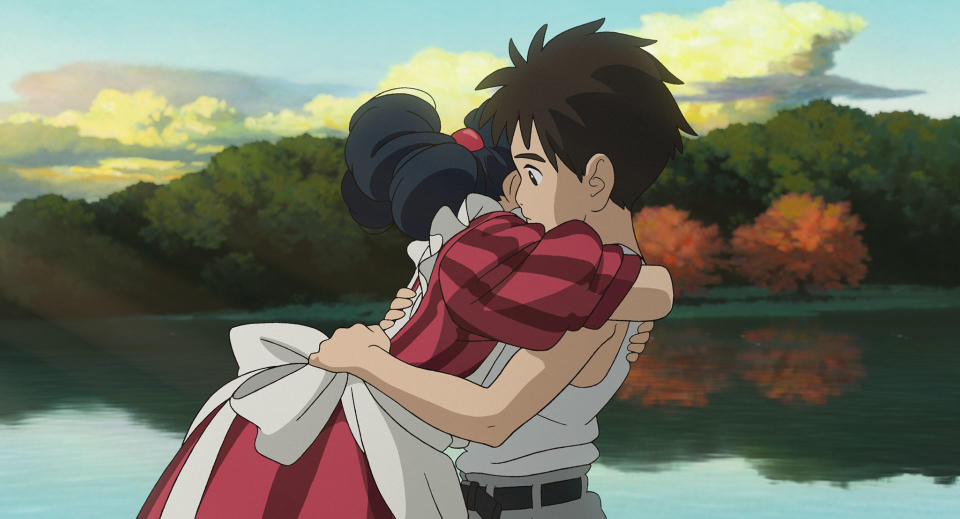
“The Boy and the Heron”
How does someone follow one of the greatest and most profoundly summative farewells the movies have ever seen? By definition, they don’t. They retire, or they die. Or they retire and then they die. In some rare cases, it even seems like they die because they retired. And then there’s 82-year-old filmmaker and Studio Ghibli co-founder Hayao Miyazaki, always in a category of his own, who’s formally or informally quit the business no fewer than seven times of the course of his illustrious career, most recently after the 2013 release of his magnum opus “The Wind Rises.” That film — a fictionalized biopic about aeronautical engineer Jiro Horikoshi — ended with someone concluding “we must live,” in spite of all things. Miyazaki’s new last film (for now) asks how, and then offers its own kind of answer.
The story of an angry and grieving child named Mahito who loses his mother in a 1943 hospital fire and then moves to the Japanese countryside so that his father can marry the boy’s aunt, “The Boy and the Heron” kicks into high gear once an Iago-like bird lures Mahito into a parallel universe with promises of reuniting with his mother. Already one of the most beautiful movies ever drawn, Miyazaki’s film becomes transcendent from that point on, resolving into a dream-like adventure that finds its creator nakedly reflecting on his legacy. And while this dream-like warble of a swan song may be too pitchy and scattered to hit with the gale-force power that made “The Wind Rises” feel like such a definitive farewell, “The Boy and the Heron” finds Miyazaki so nakedly bidding adieu — to us, and to the crumbling kingdom of dreams and madness that he’ll soon leave behind — that it somehow resolves into an even more fitting goodbye, one graced with the divine awe and heart-stopping wistfulness of watching a true immortal make peace with their own death. —DE
“Close Your Eyes”
Victor Erice has only made three other features since his spellbinding debut, but all are set in the liminal space between film and reality. A similarly haunting drama about a girl whose relationship to her father — and to history itself — is forever changed by the discovery that he was in love with a movie star before Franco’s rise to power, 1983’s “El Sur” also filtered the afterimage of the Spanish Civil War through the lens of a projector, thereby framing the cinema as a medium connecting people to their lived and imagined pasts. After a nine-year absence (short by his standards), Erice returned with 1992’s “Dream of Light,” a self-reflexive narrative/documentary hybrid that saw a painter struggling to reconcile his finite mortality with the timelessness of artistic creation.
More than three decades later, Erice has come back in from the cold with a 169-minute epic that effectively finds him doing the same thing on his own terms. In some respects, it feels like the most nakedly personal film the now 83-year-old has ever made. In others, it feels like the only film he’s ever made. Or maybe all of them.
Sedate but ultimately shattering by dint of its simplicity (and its absolute slam-dunk of a final scene), “Close Your Eyes” is neither an autobiographical cine-memoir à la “The Fabelmans” nor a teary-eyed tribute to the magic of the movies in the vein of “Cinema Paradiso.” Yet, as if by accident and divine purpose all at once, it also becomes both of those things by the end. Set at the dawn of the streaming age and shot with the funereal sterility that came with it, “Close Your Eyes” openly laments the loss of a more tactile film experience (the kind that included actual film), but only so that it can honor the way certain images take root inside us when seen under the right circumstances, as inextricable from our being as a soul from its body. —DE
“Dear Jassi”
Tarsem Singh Dhandwar’s “Dear Jassi” starts with a declaration: This is a love story. Sikh singer Kanwar Grewal proclaims this directly to the audience while sitting in the lush fields of Punjab, visibly moved already by the the events about to be depicted. Over the next 132 minutes, Dhandwar weaves the stirring, tragic, and true journey of Jassi (Pavia Sidhu) and Mithu (Yugam Sood).
Jaswinder “Jassi” Kaur and Sukhwinder Singh “Mithu” Sidhu met in Punjab in the 1990s (1996 in the film, 1994 in real life), where they quickly fell in love. “Dear Jassi” chronicles their courtship from that first serendipitous meeting and through years of love letters, phone calls, and a secret marriage. Dhandwar and his cinematographic collaborator Brendan Galvin instantly immerse viewers in the story, told through long takes and slow, steady panning that captures the stillness of rural India — and how love and hate can shake that peace to its very roots.
Sidhu and Sood stun from the start as the young lovers. She trembles and tears up even in the joyous early stages, giving the impression that Jassi feels so much love she can hardly bear it, and even trying to do so brings tears to her eyes. Sood’s Mithu is quiet and gentle compared to his determined Canada-raised wife, externalizing the comfort Jassi feels in his company (it also happens to be his feature debut). The film lags in the middle, but the final, ruthless act will have you longing for the simplicity of circular conversations and miscommunication in favor of what comes next. —PK
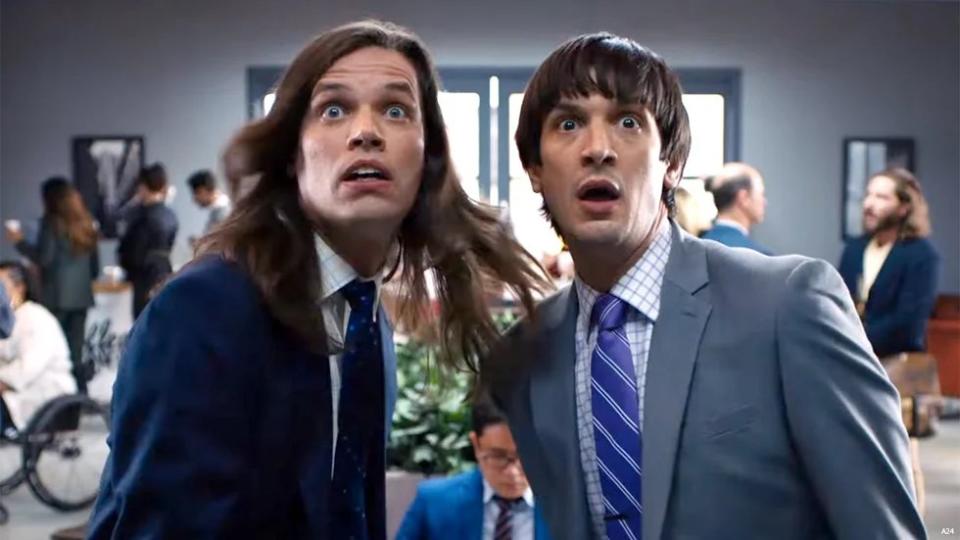
“Dicks! The Musical”
Credit where credit is due, the filmmakers behind “Dicks! The Musical” did show some restraint regarding the film’s depiction of male appendages. Otherwise, this A24 film goes off the rails in the best possible way, providing filmgoers a filthy, frivolous introduction to fearless screenwriter-stars Aaron Jackson and Josh Sharp. Subversive seems like an understatement when dealing with a movie musical that concludes with a show-stopping number that calls God a slur.
If one thought starring in “Beau Is Afraid” would be Nathan Lane at his bizarro peak this year, wait till people see him take precious care of instant queer cultural icons the sewer boys. Megan Mullaly is literally and figuratively off her rocker as well as the other half of this profane “Parent Trap” send-up. Director and habitual line-stepper Larry Charles has a new cult classic on his hands, creating a piece of work that feels both funny and dangerous. —MJ
“Dream Scenario”
Norwegian filmmaker Kristoffer Borgli (“Sick of Myself”) is obsessed with the internet’s effect on the collective unconscious, and — in turn — the collective unconscious’ effect on individual self-image. In other words, he makes extremely online movies about modern fame. His third and most complete film, the hilariously surreal (and comparatively sweet) “Dream Scenario,” is a Kaufman-esque cautionary tale starring Nicolas Cage as a nerdy college professor who spontaneously begins appearing to perfect strangers around the world in their sleep. A meme without a modem. At first it’s a novelty, then it’s a blessing, and then it’s a nightmare. Attention is nice, but buyer beware: You have no control over how other people see you in their heads.
Before it becomes what Borgli describes as one of his “constructive bullyings of our collective behavior,” “Dream Scenario” is simply the best absurdist comedy of its kind since “Anomalisa.” Borgli may have had some trouble scaling the body horror in “Sick of Myself,” but the elastic premise of his latest script offers him no such trouble; for all of the high-concept semi-comedies that we get these days, precious few have had this much fun just following their own rules to logical conclusions. The sight of a bearded Cage apathetically standing on the sidelines as someone is ripped apart by a blood demon conjured by their own subconscious is inherently funny stuff (Ari Aster is one of the film’s producers, and his fingerprints are all over it), and Paul’s general befuddlement over the situation in his waking life is likewise the stuff of reliable comic gold. It’s only when Paul’s role in other people’s dreams begins to evolve that he starts entertaining the full possibilities of his latent fame, and Borgli similarly leaps at the chance to make the most of it. What he does with that chance looks very different than, say, what the Daniels recently created from a scenario that allowed them to violate the boundaries of conventional logic, but the results of Borgli’s cringe-driven minimalism are almost as uproarious. —DE
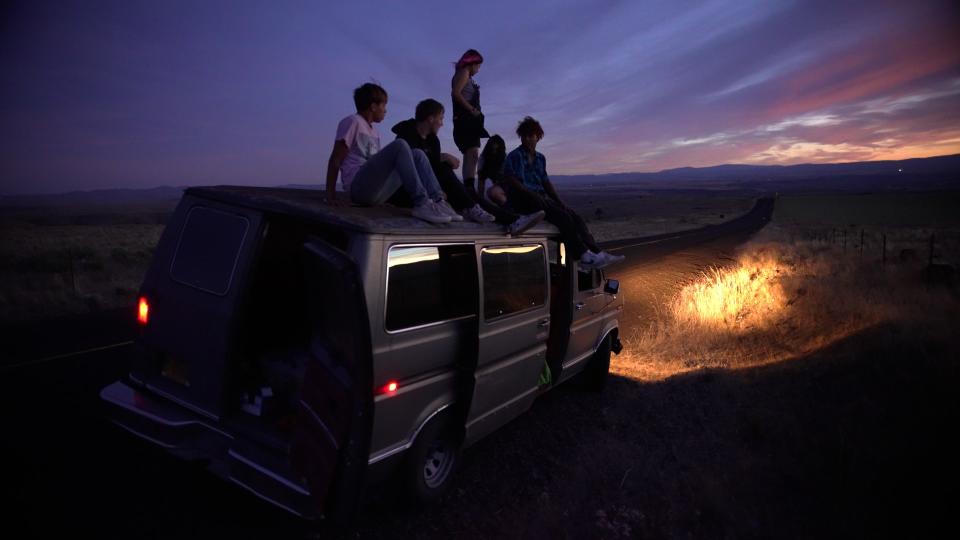
“Gasoline Rainbow”
Bill and Turner Ross’ latest experiment in semi-scripted cinema isn’t a documentary, but it’s portrayal of those first tastes of freedom is so accurate that it might as well be. “Gasoline Rainbow” follows a group of five recent high school grads meandering through Oregon in an attempt to enjoy one last adventure before they have to “get jobs and shit.”
What begins as a drive to the coast in a weed-filled van quickly becomes a 500-mile walk to Portland after their tires are stolen. Every distraction and useless detour is embraced with a level of enthusiasm that only exists in the liminal space occupied by those who know they still have homes but don’t necessarily want them anymore. “Gasoline Rainbow” is a film that constantly transcends its novelty format and ultimately emerges as one of the first great road movies for the TikTok generation. —CZ
“Green Border”
Polish director Agnieszka Holland knows how to make films about people wriggling their way through life. “Green Border” tells several interlinked stories in and around the swampy forest border region between Poland and Belarus. We meet border guards, activists, and refugees themselves. Despite biting off a bit more than it can chew, it’s an affecting introduction to a little-known crisis and the latest case of a master filmmaker showing us they can still do it.
Premiering at festivals just before a national election in which Poland’s hard-right government extended its grip on power as expected, “Green Border” also has a moral urgency beyond its representation of refugees’ hardship, who are described by members of Poland’s Straż Graniczna as “tourists.” If only it were so easy. The Belarusian government allows flights from war-torn parts of Africa and the Middle East in order to send migrants toward Poland, creating problems for its neighbor, a member of NATO and the European Union.
Holland’s film is a desperate, transparent call for her country to get a grip. That seems optimistic, but she is certainly pissing off the right people: Justice Minister Zbigniew Ziobro, whose notoriety as a hardliner in a hardline government earns him a name drop in Holland’s film, has already compared “Green Border” to “Third Reich propaganda.” The film doesn’t always hold together across its three narratives, but its moments of true emotional poignancy work well. —AS
“High and Low: John Galliano”
Documentarian Keevin Macdonald has crafted one of the most riveting rise-fall-redemption story arcs in documentary format in recent memory, with Galliano himself as his unreliable — but never less than compelling — guide. “It was a disgusting thing, foul thing, that I did. It was horrific,” he says, of the antisemitic remarks he made, caught on video, that blew up his life in early 2011.
For an hour until that grainy, unfortunate clip appears, we see how Galliano got there: by becoming one of the boldest fashion designers of the second half of the 20th century, someone who told stories through fabric — and nursed multiple addictions at once. Macdonald interlaces clips from Abel Gance’s “Napoleon” and Powell and Pressburger’s “The Red Shoes” to craft a unique portrait of creativity and burnout, and he pushes Galliano to deeply uncomfortable places. —CB
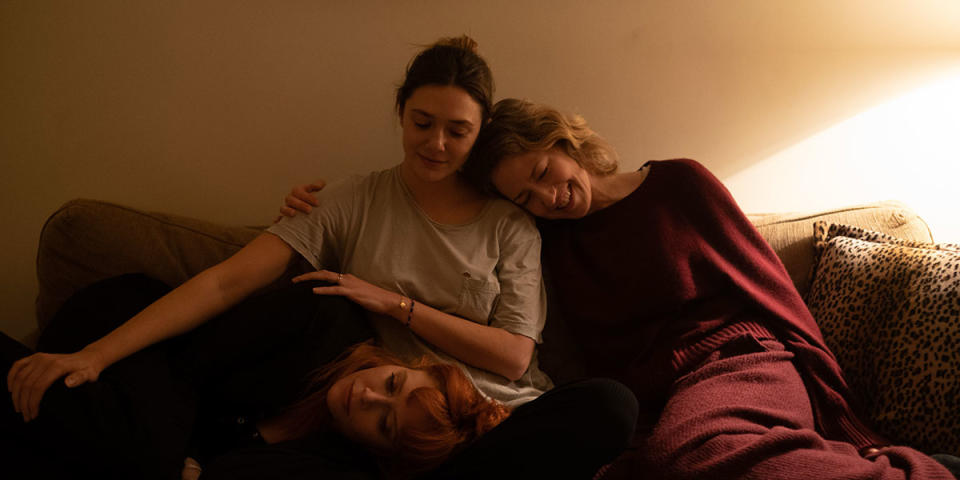
“His Three Daughters”
Katie (Carrie Coon) cannot believe no one got her father’s Do Not Resuscitate order signed before he slipped into unconsciousness. Christina (Elizabeth Olsen) is rifling through her old boxes to find a comforting Grateful Dead concert tee. Rachel (Natasha Lyonne) has way too many bets going and way too much pot to smoke to pay too much attention to whatever the hell her sisters-in-name-only have going on. A few steps away, down a short hallway and behind a thin door, lies their father (Jay O. Sanders), only the steady beep of the various machines that have infiltrated his home assuring us he’s still, for now, alive.
Other infiltrations play primary roles in Azazel Jacobs’ warm-hearted grief tale, “His Three Daughters,” and those include Katie and Christina, who have arrived to ease their dying father into the next stage of his existence while overlooking the contributions of their other sister, Rachel, who has been there all along. And yet none of them can really see each other clearly, at least at first, and this trio is stuck on the most basic details: Katie is too bitchy, Christina is too woo-woo, Rachel is too high. For a while, that’s what we see, too.
Jacobs’ script metes out details in ingenious ways — as the women bicker over writing their dad’s obituary, for instance, we find insight into their dad’s life and a further refining of the nature of their bonds — and mostly sidesteps feeling beholden to exposition. It’s a part of what they’re doing, what they’re enduring together, a necessary part of the experience that serves Jacobs’ restraint well. But who are they to each other? And who will they be after the inevitable passing of their father? “His Three Daughters” asks major questions but distills them down to this precise story, life’s biggest worries in jewel box miniature. —KE
“The Holdovers”
Almost 20 years after “Sideways,” Alexander Payne rejoins Paul Giamatti, who this time plays a hidebound professor at a boarding school who supervises a group of Christmas orphans who can’t go home during the holidays. Directing a script from “Kitchen Confidential” showrunner David Hemingson, Payne knows exactly how to calibrate the mix of edgy humor and genuine pathos this story requires. Giamatti revels in his surly curmudgeon with a soft heart, while newcomer Dominic Tessa finds the right balance of entitled asshole and needy teenager.
This marks a major comeback for Payne (after 2017 dud “Downsizing”), as “The Holdovers” won over both Toronto critics and audiences, landing second place at the People’s Choice Awards. —AT
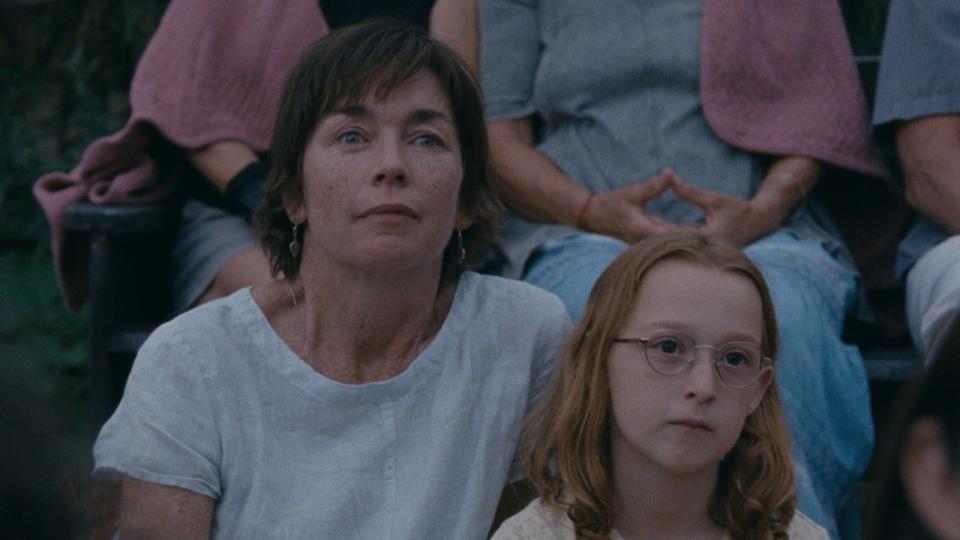
“Janet Planet”
In the opening moments of “Janet Planet,” Annie Baker’s understated miracle of a directorial debut, a young girl runs across a darkened field into a seemingly abandoned structure. She picks up the phone in the dimly lit wooden room and makes a shocking claim: She’s going to kill herself. It’s a disorienting statement that makes the viewer immediately question what exactly this film is or may become. It also turns out to be a wry joke that serves as an introduction to Lacy (newcomer Zoe Ziegler), the wonderfully peculiar preteen whose perspective is the movie’s engine.
Lacy’s threat, it turns out, is an empty one. She just wants her mother Janet (Julianne Nicholson) to come pick her up from camp where she’s feeling like an outcast and uses an overly dramatic ploy to get what she wants. Janet, who gives the film its title, obliges, and it’s the first glimpse of the fascinating and idiosyncratic codependent relationship that Baker brings to life in her first feature. “Janet Planet” is gloriously packed with the carefully observed details of the lives of its central characters, who are embodied with warmth and endearing strangeness by Ziegler, an incredible discovery, and the typically fantastic Nicholson, who gives one of her finest performances to date. It also marks Baker’s transition from heralded playwright into major cinematic voice. —EZ
“The Peasants”
The long-awaited follow-up to “Loving Vincent” from married directing team D.K. Welchman and Hugh Welchman is something infinitely more ambitious, if commercially more challenging: A sensuous, richly immersive adaptation of Nobel laureate Wladislaw Reymont’s early 20th-century novel, “The Peasants,” about life in a rural Polish village. And yes, like “Loving Vincent” this is an animated film, with actors filmed in live action and then 40,000 oil paintings created on top of the photographic images.
Where “Loving Vincent” was a soothing experience, quiet and contemplative, “The Peasants” is loud and brash — powered by an extraordinary explosion of Polish folk songs given propulsive 21st-century beats by rapper/composer Lukasz “L.U.C.” Rostkowski — and, it must be said, deeply upsetting. It’s the story of Jagna, played with radiant energy by Kamila Urzedowska, whose defining feature is that she’s the most beautiful girl in her small village, Lipce. Well, that’s how everyone in Lipce defines her, at least. What unfolds is a story about the tragedy of having others define who you are — as remote as this 19th-century village in Poland may seem, that is a theme that remains ever-potent. And with this unique animation style, there are deeper truths unlocked here than straightforward realism could provide. —CB
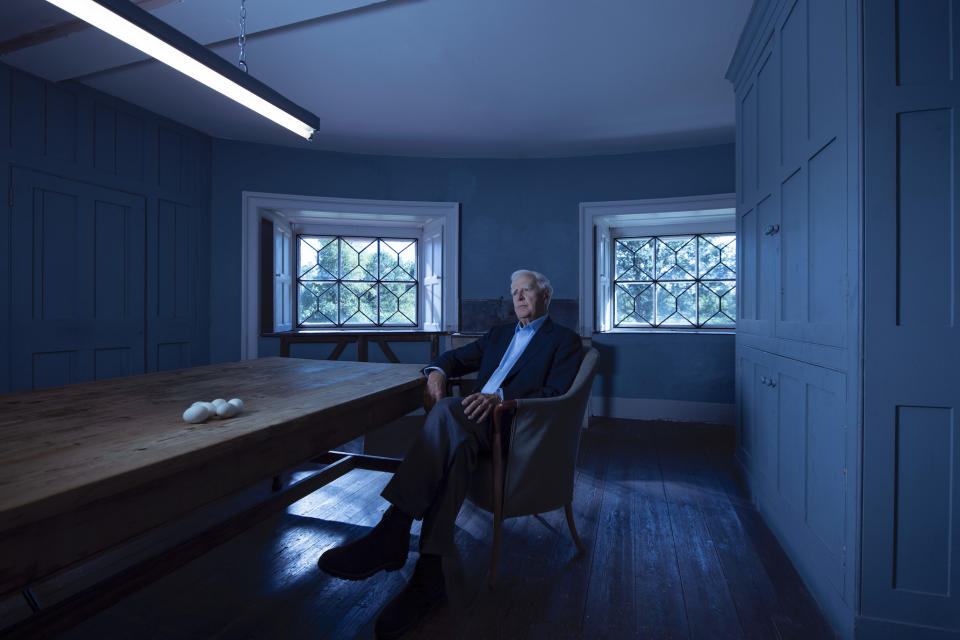
“The Pigeon Tunnel”
Documentarian Errol Morris often faces down squirmy subjects, from the 2003 Oscar-winning “The Fog of War: Eleven Lessons from the Life of Robert S. McNamara,” to another former Defense Secretary, Donald Rumsfeld, for “The Unknown Known” (2013). For “The Pigeon Tunnel,” Morris recorded four days of interviews with John le Carré (neé David Cornwell) in fall 2019; they proved to be the acclaimed author’s last. The film is an adaptation of le Carré‘s own 2016 autobiography. The former MI5 and MI6 UK intelligence officer wrote 26 novels — 16 of which have been adapted into movies and/or television including “The Spy Who Came In From the Cold,” “The Constant Gardener,” “Tinker Tailor Soldier Spy,” and “The Russia House.”
Morris isn’t interested in these Hollywood interpretations. Morris’ film — a mix of articulate, philosophical interviews with vivid reenactments and rich archive footage — lays out the six decades of Cornwell’s life in bits and pieces, with images of the pigeon tunnel at its center. During a childhood visit to a Monte Carlo casino, Cornwell saw pigeons that were kept in cages and thrown into a series of dark tunnels and pushed into the sky to meet almost certain death, he wrote, “as targets for well-lunched sporting gentlemen who were standing or lying in wait with their shotguns.” The pigeons who escaped destruction returned to their roost, only to be sent out again. Morris and Cornwell are well-matched verbal adversaries: Morris evoked some emotion from Cornwell over the course of the interviews, especially when talking about his con-man father Ronnie. —AT
“Poor Things”
Emma Stone is a woman who gets to start from scratch in Yorgos Lanthimos’ unbound and astonishing new feature, “Poor Things.” For most of us, life is comprised of knowledge and circumstance that take decades to accumulate until we die.
For Stone’s Bella Baxter, that process happens in very fast motion, thanks to a reanimating procedure that finds her, once a dead woman floating in a river, now alive again with her unborn child’s brain inside her head. Bella, née Victoria, is a living breathing tabula rasa unfettered by societal pressures, propriety, or niceties. And Stone, in her most brazenly weird performance to date, plays her like a toddler taking its first steps and saying its first words — until by the end of “Poor Things” she’s speaking fluent French and studying anatomy, her eyes and ears full of worldliness.
Boldly realized with taffy-colored production design, brain-bending sets stuffed with enough easter egg unrealities to fill the most difficult 5,000-piece jigsaw puzzle, and wildly over-the-top Victorian costumes that look as if made by a schizoid seamstress on too many tabs of acid, “Poor Things” is also hysterically funny and the raunchiest movie you’re likely to see all year. Lanthimos makes a sexually graphic picaresque that’s part Terry Gilliam, part Ken Russell, about Bella’s pursuit of pleasure but also her selfhood in a patriarchal world. Mark Ruffalo, Willem Dafoe, and Ramy Youssef each provide overwhelmingly hilarious turns as the men in Bella’s life — her ridiculous lover, her creator, and her potential husband, respectively.
“Poor Things” is the best film of Lanthimos’ career and already feels like an instant classic, mordantly funny, whimsical and wacky, unprecious and unpretentious, filled with so much to adore that to try and parse it all here feels like a pitiful response to the film’s ambitions. It’s proof that whatever weird alchemy Stone and Lanthimos are vibing on after “The Favourite” is the real deal. —RL
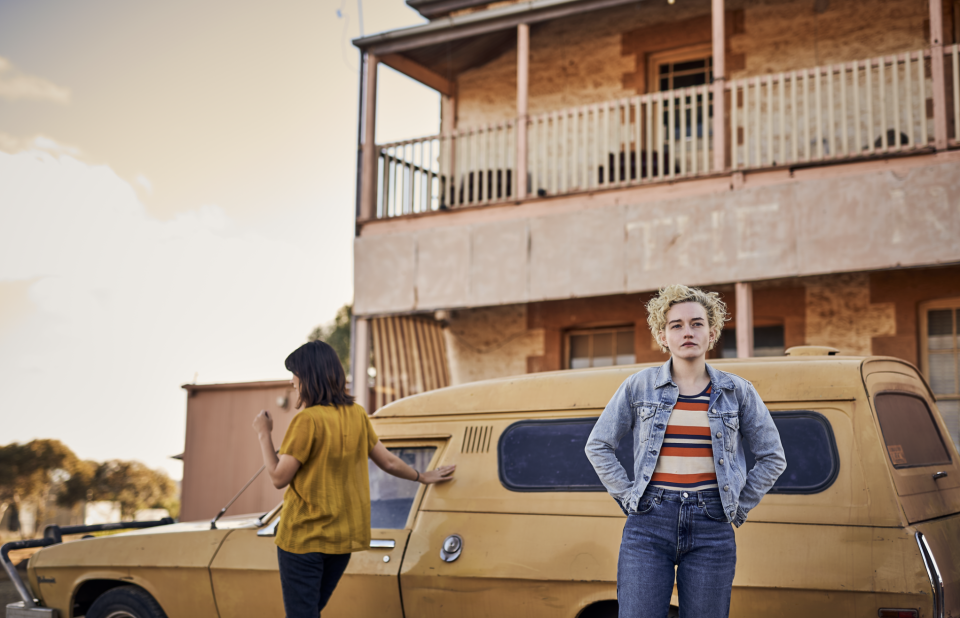
“The Royal Hotel”
Following 2019’s deeply unnerving “The Assistant” with another razor-sharp Julia Garner collaboration, Australian filmmaker Kitty Green has decided to strand her favorite actress in one of the few places on Earth more dangerous for a young woman than Harvey Weinstein’s production office: A shithole bar on the border of an ultra-remote mining town so deep within the Australian outback that no one there has even heard of the #MeToo movement. Welcome to “The Royal Hotel.” The good news is that Garner’s character isn’t alone; Hanna’s on an open-ended vacation with her friend Liv (Jessica Henwick) when the two run out of money on a party boat in Sydney and decide to sign up for the last Work & Travel job available. The bad news is that Liv is about to be Hanna’s only ally for a few hundred miles in any direction, and she tends to become more of a liability than a safety net after a few drinks. The lady at the job office warns these wayward American girls that they might have to put up with some male attention, but that would be like the owner of the Overlook Hotel warning Wendy Torrance that she might have to put up with a mild case of writer’s block.
And so the stage is set for Green to stage another masterfully constructed pressure cooker about the perils of being a woman on planet Earth, this one much pulpier and more visceral than “The Assistant” (which was a veritable chamber piece), but no less exacting in how it conveys the constant threat assessment required for a girl in Hanna’s situation to make it safely through the night. By the end of her first shift behind the bar at The Royal Hotel, an elaborate matrix of lust, expectation, and entitlement has already been established between Hanna and some of the bar’s regulars. By the end of her second week there, every beer she’s asked to get a particularly terrifying miner — and every smile that she’s expected to serve along with it — has become as suspenseful as watching a truck full of nitroglycerine make a hairpin turn in “The Wages of Fear.” —DE
Best of IndieWire
Martin Scorsese's Favorite Movies: 75 Films the Director Wants You to See
Where to Watch This Week's New Movies, from 'Anatomy of a Fall' to 'Taylor Swift: The Eras Tour'
Sign up for Indiewire's Newsletter. For the latest news, follow us on Facebook, Twitter, and Instagram.

